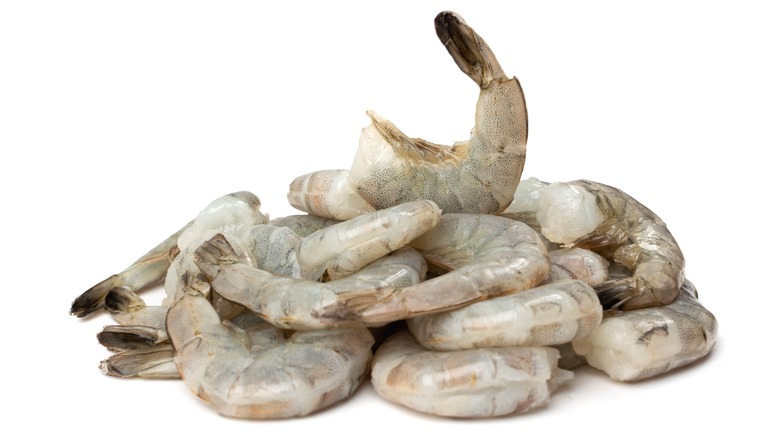Frozen Shrimp
Frozen Shrimp
Regular, Black Tiger or Vannamei
With or Without Heads
With or Without Shells
With or Without Intestines
A Grade
Frozen shrimp come in various types and preparations, and their characteristics can significantly impact their culinary uses and convenience. Here’s a breakdown of the options you’ve mentioned:
Types of Shrimp:
- Regular Shrimp: This term typically refers to commonly available shrimp varieties that aren’t specifically classified as black tiger or vannamei. They could include other species like white shrimp or brown shrimp.
- Black Tiger Shrimp (Penaeus monodon): Known for their large size and distinctive black stripes, black tiger shrimp have a robust flavor and firm texture. They are often used in dishes where a more substantial shrimp presence is desired.
- Vannamei Shrimp (Penaeus vannamei): Also known as Pacific white shrimp, vannamei shrimp are smaller than black tiger shrimp and have a milder flavor. They are commonly farmed and widely available due to their fast growth and adaptability.
Preparation Options:
- With or Without Heads:
- With Heads: Often preferred by chefs for their enhanced flavor in dishes like broths, soups, or stews. The heads can add depth to the flavor.
- Without Heads: More convenient for many recipes and easier to handle, especially for quick cooking methods like grilling or stir-frying.
- With or Without Shells:
- With Shells: Retaining the shells can help preserve flavor and moisture during cooking. This option is often used in recipes where the shells can be easily removed after cooking, like in seafood boils or some grilling methods.
- Without Shells: This option is more convenient for quick preparation and dishes where the shrimp is to be eaten directly, like in pasta dishes or salads.
- With or Without Intestines (Veins):
- With Intestines: Some people cook shrimp with the veins intact, but they are often removed for a cleaner presentation and taste.
- Without Intestines: De-veined shrimp are more aesthetically pleasing and are preferred in many recipes to avoid any gritty texture or off-flavor that can sometimes be present in the digestive tract.
Grade A Shrimp:
- Grade A: Indicates high quality. Grade A shrimp are typically uniform in size, have a firm texture, and are free from defects or off odors. They are often used in premium restaurant settings and for high-quality home cooking.
Usage Tips:
- Thawing: To thaw frozen shrimp, place them in the refrigerator for several hours or overnight. For a quicker method, you can place them under cold running water. Avoid thawing shrimp at room temperature to prevent bacterial growth.
- Cooking: Frozen shrimp should be cooked until they turn pink and opaque. Overcooking can make them tough and rubbery. They can be used in a wide range of dishes, including stir-fries, skewers, salads, and pasta.
- Storage: Keep unused frozen shrimp in the freezer. Once thawed, shrimp should be cooked within 1-2 days for best quality.
Choosing the Right Option:
- For Convenience: Opt for shrimp without shells and intestines, especially if you’re short on time or prefer minimal prep work.
- For Flavor and Authenticity: Choosing shrimp with shells and heads might be preferable for dishes where you want to maximize flavor.
Each option has its own benefits depending on the dish you’re preparing and your personal preferences.





